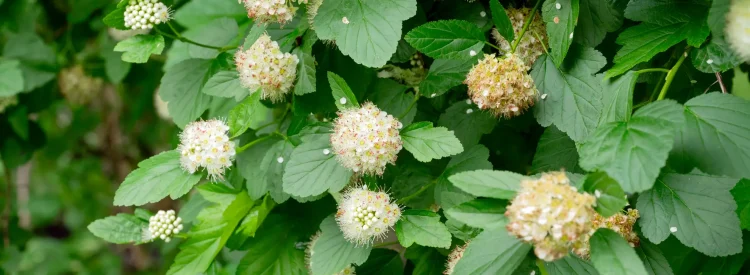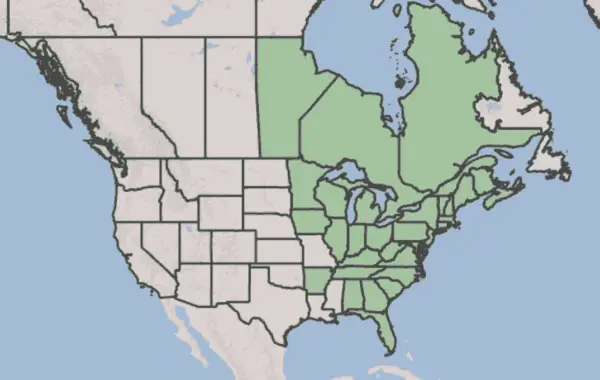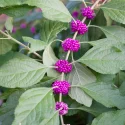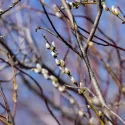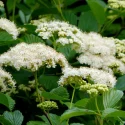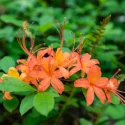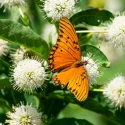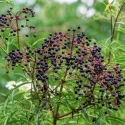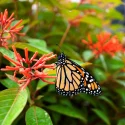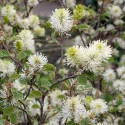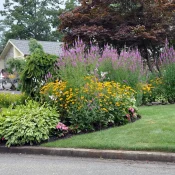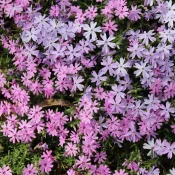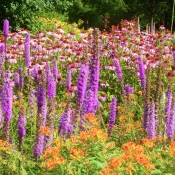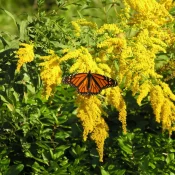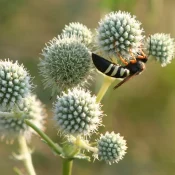Ninebark is a four-season showstopper. In spring, its arching stems are studded with clusters of white or pink flowers that pollinators adore. Summer brings lush foliage. In fall, flowers turn into seed clusters that feed songbirds. And in winter, when the leaves drop, Ninebark lives up to its name: its bark peels back in layers, revealing sculptural, papery textures that glow against the snow. Ninebarks grow fast and like a wide range of light, from shade to full sun. Plant a stunning Ninebark and watch the show.
Why Ninebark named for its bark and not its gorgeous flowers is a mystery
Let’s dig in with a basic question, shall we?
Is Ninebark a good choice for my yard?
Yes, if…
- You want a shrub with year-round interest.
- You’d like a fast-growing, easy-care native.
- You want to feed both pollinators (flowers) and birds (berries).
- You have sun or part-shade spots that need structure.
- You have space for it to roam (or pruners handy).
Why Ninebark matters
- Pollinator + bird support: Flowers buzz with bees in spring; berries feed birds in fall/winter.
- Four seasons of beauty: Blooms, berries, foliage, and bark keep things interesting year-round.
- Beginner-friendly adaptability: Thrives in a wide range of soils and light conditions.
- Perennial: Plant once, and enjoy for decades.
This plant also sometimes goes by the common name Atlantic Ninebark. The Latin name is a huge help when determining whether you’re looking at the right plant (every plant has only one Latin name). This plant’s Latin name is Physocarpus opulifolius. Look at the plant tag when you’re at the nursery to ensure you’ve got the right plant.
New to native?
Before lawns and landscaping, native plants were here. They’ve fed birds, bees, and butterflies for thousands of years—and they’ll do the same in your yard. The best part? They’re easier to grow than you think.
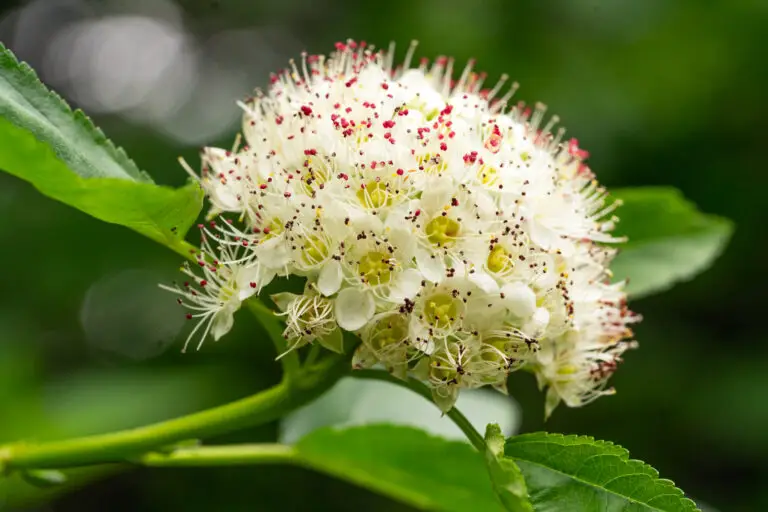
Ninebark throughout the seasons
Ninebarks change dramatically throughout the seasons in wildly different ways, but look amazing no matter what. (They are the Cate Blanchett of native gardening.)
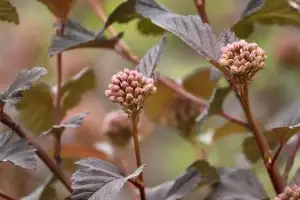
spring
In the early spring, Ninebarks cover their long stems in grape-like leaves and tiny buds. (These are the reddish leaves of a Ninebark cultivar—read on to learn more.)
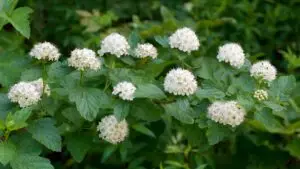
summer
In the early summer, Ninebarks put out delicate clusters of beautiful flowers in tiny, dome-shaped bouquets.
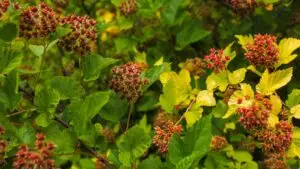
fall
In the fall, the flowers change to tiny fruits, becoming tiny buffets for songbirds.
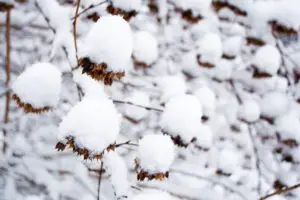
winter
In the winter, the fruits hang like confetti from the arched branches, providing important food for birds in the coldest months. And then they start the show all over again.
Where is Ninebark native?
Ninebark is native to a wide portion of North America, from Nova Scotia to Florida. If you live in the Northeast, Mid-Atlantic, Midwest, or Southern United States, you can happily plant Ninebark.
Have you see a Ninebark with reddish or purple leaves? Those are Ninebark cultivars.
Ninebark species and cultivars
The true native species (Physocarpus opulifolius) is the best choice for supporting wildlife. But cultivars—sometimes called “nativars”—are popular too, bred for foliage colors or compact forms. You can read our beginner-friendly overview on cultivars for more.
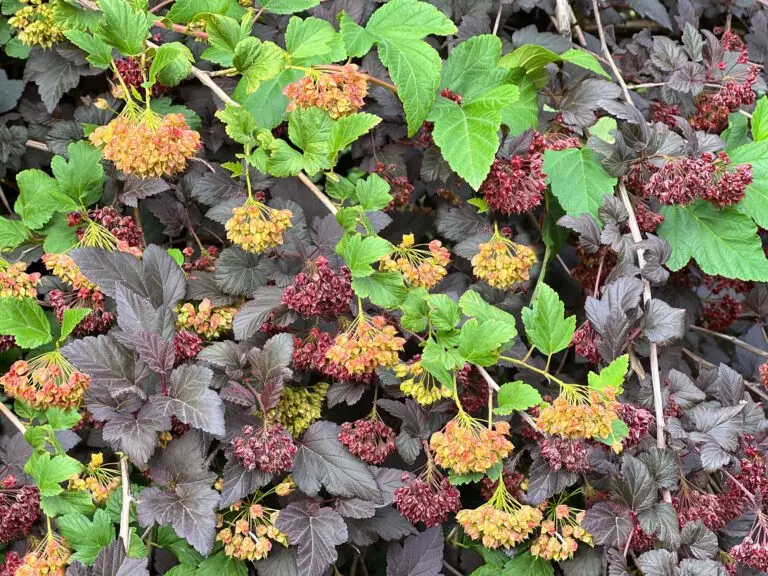
Native vs. cultivar—which is better?
Although cultivars offer variety, nothing beats a true native plant when it comes to offering food and habitat for birds and pollinators. The Plant Native recommends planting true natives when possible.
That said, cultivars are always better than non-natives. If you fall in love with a cultivar…plant what you love. Some popular Ninebark cultivars include:
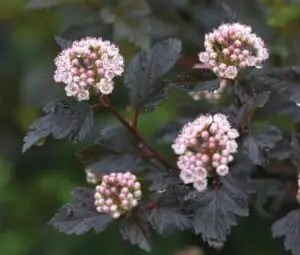
Ninebark 'Summer wine'
Physocarpus opulifolius ‘Summer wine’
‘Summer Wine’ has dark purple leaves with hints of cabernet red, alongside light pink flowers.
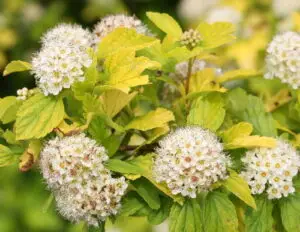
Ninebark 'Festivus Gold'
Physocarpus opulifolius ‘Festivus Gold’
Ninebark “Festivus Gold” is strangely named for a Seinfeld holiday (?) and has neon-green leaves and bright white flowers.
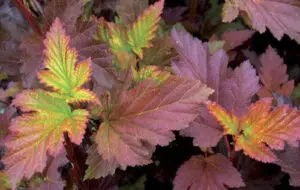
Ninebark 'Center Glow'
Physocarpus opulifolius ‘Center Glow’
Ninebark “Center Glow” is aptly named for the way color spreads from the center of its leaves to the leaf edges.
What is a cultivar?
Cultivar is short for CULTIvated VARieties. Cultivars are plants selected for traits like color, size, or disease resistance. Useful and sometimes stunning...but some lose the scent, shape, or timing wildlife depends on. Plant straight species when possible.
Now that we’ve met some Ninebark options, let’s talk about how easy these shrubs are to plant and grow.
How to grow Ninebark
Ninebark is so easy to grow because they like a large variety of sun and water. Whether it’s part sun, full sun, wet, or dry—Ninebarks will thrive. They grow very fast as well. Their long branches grow quickly over the spring and summer growing period.
- Ninebark are perennials, so they will come back year after year. Once you plant them and they are happily established, you can enjoy them in your yard for years.
- Ninebarks like a wide range of sun. Sunny, part sun, and part shade are all great for Ninebarks.
- Ninebark likes a wide range of water conditions. Whether you plant them in drier soils or wetter areas, ninebark will thrive. They are a very easy plant to grow.
Grow Ninebark from plants
It’s easy to grow Ninebark and it’s also very easy to find Ninebark plants at your local nursery or plant sales. Ninebarks are relatively easy to find, compared to other native shrubs. Even Lowes or Home Depot have at times carried Ninebark—although we highly recommend buying from local nurseries. Local nurseries have better Ninebark selections (more kinds! more sizes! more healthy!) than any big-box store.
Here are four reliable ways to find Ninebark plants:
Where can I find seeds and plants?
Finding native plants can be challenging (we partly blame Marie Antoinette.) To make it easier, we’ve assembled four sourcing ideas.
300+ native nurseries make finding one a breeze
Explore 100+ native-friendly eCommerce sites
Every state and province has a native plant society; find yours
Online Communities
Local Facebook groups are a great plant source
Why is it called Ninebark?
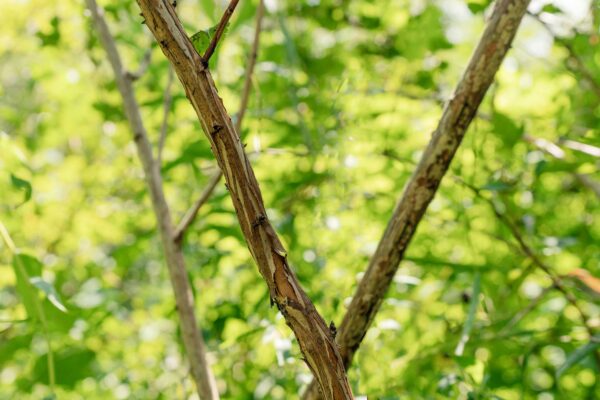
Ninebark’s common name comes from its unique bark, which peels away as it ages revealing layers below, looking almost like petals on a rose. Since there are not nine layers of bark, we can assume it’s called Ninebark for poetic reasons (threebark just doesn’t sound as lovely.) The older the plant is, the more pronounced the peeling becomes.
What to plant with Ninebark
Ninebark is an understory shrub—or a shrub that likes to live snuggled underneath larger trees. Because of its preferred home, it’s lovely beside other plants that like shade or part shade, including Heuchera, Mountain Laurel, Golden Alexander, and native rhododendrons.
We hope this guide to Ninebark inspired you to plant a few. Ninebarks are extremely easy to plant, fast growers and will come back year after year looking amazing. The native variety offers the maximum wildlife support, while fun cultivar versions offer different colors and sizes. Head over to our Beginner’s Guide to Understanding Cultivars or our Beginner’s Guide to Native Magnolias to find more native friendly inspiration. Happy planting!
Sources
- Missouri Botanical Garden, Physocarpus opulifolius.
- USDA Plants Database, Common Ninebark.
What if your feed was actually good for your mental health?
Give your algorithm a breath of fresh air and follow us.
